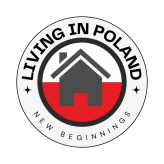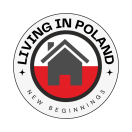
Yes, you can. Whether you’re here on a temporary residence card, work visa, or other legal basis, you’re still allowed to buy and own a vehicle. Just make sure your legal stay in Poland is valid and that you can prove your address when it comes time to register the car.
To register a car, you’ll need to visit your local wydział komunikacji (vehicle registration office) with a bundle of documents: your ID, proof of ownership (usually a purchase agreement or invoice), car documents (like the dowód rejestracyjny and karta pojazdu), proof of insurance, technical inspection confirmation, and proof of address. You’ll also need to pay a registration fee. Once submitted, you’ll receive temporary plates and documents while your permanent registration is processed.
When you register a car, you’ll usually be given temporary plates (white on red) and a temporary registration certificate, which are valid for up to 30 days. During this time, your official plates and updated registration document are being processed. Once ready, you’ll be notified to pick them up.
Costs vary depending on the car and how often you drive, but common monthly expenses include fuel (slightly cheaper than in the UK), insurance (OC and optional AC), parking (especially in cities), maintenance, and ZUS if you’re self-employed and use the car for business. It’s not dirt cheap—but overall, still more affordable than in many Western countries.
After initial registration, most cars require a technical inspection (badanie techniczne) every 12 months. The check ensures your car is roadworthy, and without it, your vehicle isn’t legally allowed on public roads. Inspections must be performed at an authorised testing station (Stacja Kontroli Pojazdów).
At minimum, you need third-party liability insurance (OC). This covers damage you cause to others. If your car has any real value, consider adding Autocasco (AC) for theft and damage protection, and Assistance for breakdown support. Personal accident coverage (NNW) is also available. Always compare policies before committing.
Yes, but be prepared for paperwork. You’ll need proof of purchase, customs clearance if it’s from outside the EU, a Polish technical inspection, and translations of all documents. Excise duty applies based on engine size. Once that’s all sorted, you register it like any local vehicle.
Apart from registration fees, you might need to pay excise duty (especially on imported cars), the 2% civil law transaction tax for private sales, and insurance premiums. There’s currently no annual road tax for regular passenger cars, but parking and city emissions fees may apply in urban areas.
Be cautious—odometer rollback (cofanie licznika) is still a thing. Always check the car’s service history, VIN number, and ownership records. If possible, take it to a mechanic for a pre-purchase inspection. Also, confirm whether the vehicle was previously in an accident and whether any outstanding debts are linked to it.
Polish law requires a warning triangle, a working fire extinguisher (within expiry), and a reflective vest. While not mandatory, a first aid kit and spare bulb set are strongly recommended—and in winter, snow chains or winter tyres may be essential depending on your region.
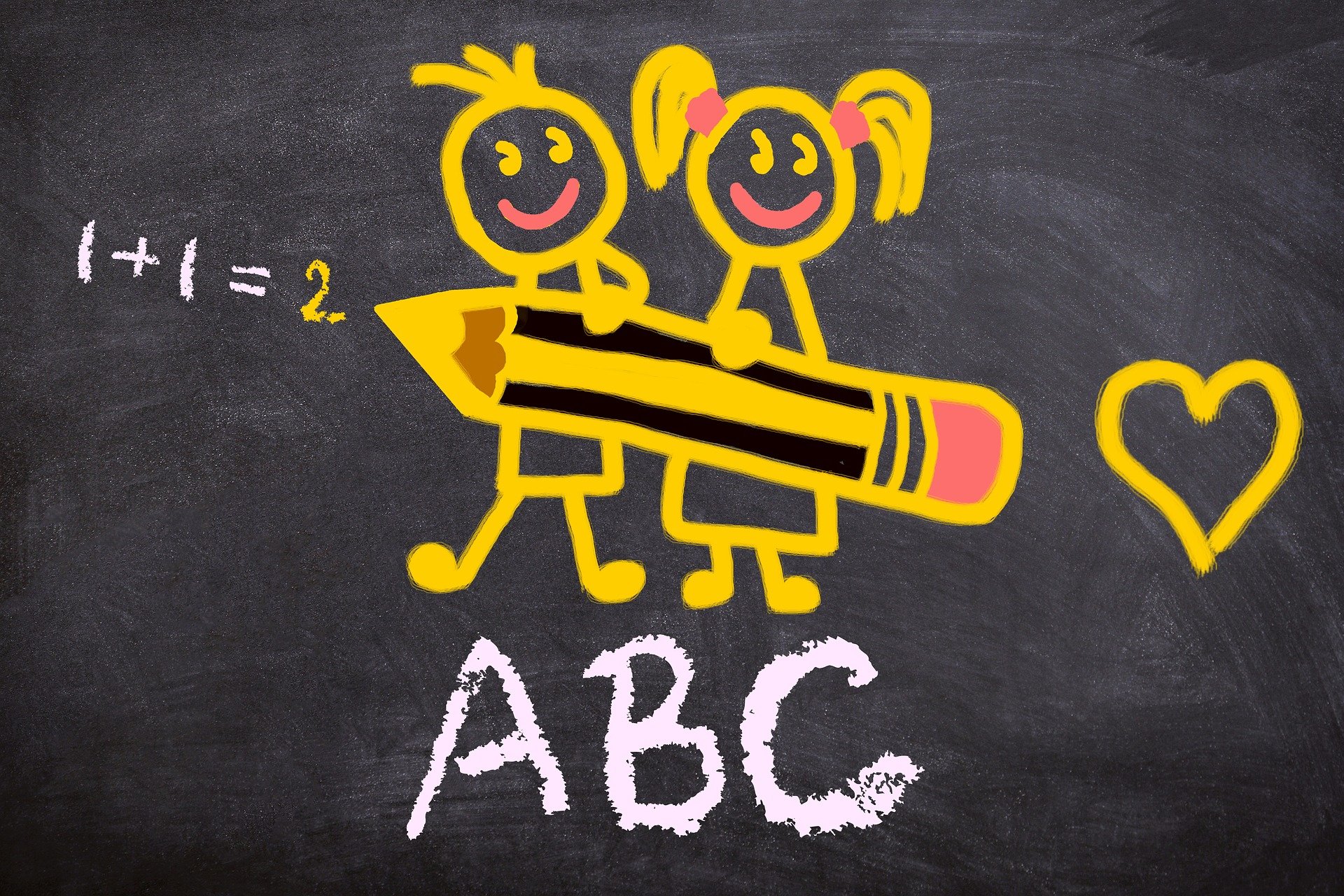
🧒 Preschool (Przedszkole): Children typically attend from ages 3 to 6. The final year, known as “zerówka,” is mandatory and prepares children for primary education.
🏫 Primary School (Szkoła Podstawowa): Lasts 8 years, starting at age 6 or 7. The curriculum includes subjects like Polish language, mathematics, science, history, and foreign languages.
🎓 Secondary Education:
🧠 General Secondary School (Liceum): 4-year programme focusing on academic subjects, culminating in the Matura exam.
🛠️ Technical Secondary School (Technikum): 5-year programme combining education with vocational training, ending with the Matura.
🔧 Basic Vocational School (Branżowa Szkoła I Stopnia): 3-year programme focusing on trades and practical skills.
🏛️ Higher Education: Includes universities and colleges offering bachelor’s, master’s, and doctoral degrees.
✅ Public education is free at primary and secondary levels for Polish and EU/EEA students.
🏫 Public universities offer free full-time programmes in Polish.
💼 Part-time and foreign language courses may charge fees.
🏷️ Private institutions charge tuition at all levels.
🎯 A national exam taken at the end of secondary school (Liceum or Technikum).
📋 Includes compulsory subjects: Polish, mathematics, and a foreign language.
🧪 Optional subjects can be chosen for university admission.
🎓 Required for entry into higher education.
🎓 First Cycle: Bachelor’s degree (Licencjat/Inżynier), 3 to 3.5 years.
🎓 Second Cycle: Master’s degree (Magister), 1.5 to 2 years.
🎓 Third Cycle: Doctoral degree (Doktor), typically 3 to 4 years.
👨⚕️ Long-cycle programmes exist for subjects like law and medicine (5–6 years).
🧑🎓 Yes, many universities offer courses in English and other languages.
💼 Common subjects include business, engineering, IT, and medicine.
🔄 Poland takes part in exchange programmes like Erasmus+.
💬 Ideal for international students seeking multilingual education.
👨🔧 Offers practical training and skills in trades and technical fields.
🏫 Taught in Technical Secondary Schools and Vocational Schools.
🤝 Includes apprenticeships and workplace experience.
📜 Leads to formal vocational qualifications.
🏫 School grades range from 1 (fail) to 6 (excellent).
🧾 Matura exam is marked in percentages, 30% required to pass each subject.
🧑🏫 University grading usually ranges from 2.0 (fail) to 5.0 (very good).
🏅 Some institutions award 5.5 or 6.0 for outstanding results.
✅ Yes, from age 6 to 18.
🧑🏫 Includes one year of preschool (zerówka), 8 years of primary, and 3 years of secondary education.
📚 Students must stay in education or training until they turn 18.
🇬🇧 English is the most common.
🇩🇪🇫🇷 Other languages include German, French, Spanish, Russian, and Italian.
🏫 Foreign language learning starts in primary school and continues through secondary education.
🧑⚕️ Inclusive education is supported by law.
🧑🏫 Students can access individual education plans and specialised staff.
🏥 Special schools and centres are available when needed.
💬 Focus is on ensuring full participation in learning for all.

🌍 Non-EU/EEA/Swiss citizens require a valid work permit to work legally in Poland.
🇪🇺 EU/EEA/Swiss citizens can work without a permit but must register their stay if exceeding 90 days.
🅰️ Type A: For foreigners employed by a Polish entity.
🅱️ Type B: For board members residing in Poland for over 6 months within a year.
🆑 Type C: For employees delegated to a Polish branch of a foreign employer.
🆔 Type D: For employees sent to Poland to perform export services.
🆓 Type E: For employees performing work not covered by other permit types.
🏢 Employer’s Responsibility: The employer must apply for the work permit on behalf of the foreign employee.
📄 Required Documents: Include application form, proof of legal status of the employer, employment contract, and employee’s passport copies.
💳 Fees: Vary depending on the type and duration of the permit.
⏳ Duration: Typically issued for up to 3 years, depending on the employment contract.
🔄 Renewal: Employers can apply for an extension before the permit expires.
📄 Yes, a work permit allows employment, but a National D-type visa is required for entry and stay in Poland.
📝 Application: Submit visa application to the Polish consulate in your home country with necessary documents.
🌾 Purpose: For work in agriculture, horticulture, tourism, and similar sectors.
📆 Validity: Up to 9 months within a calendar year.
🌍 Eligible Countries: Primarily for citizens of certain countries like Ukraine, Belarus, Moldova, Georgia, and Armenia.
📝 Simplified Procedure: Allows certain nationals to work in Poland without a work permit for up to 24 months.
🌍 Eligible Nationals: Citizens of Armenia, Belarus, Georgia, Moldova, and Ukraine.
🏥 Mandatory: Foreign workers must have valid health insurance coverage.
🏢 Employer’s Role: Often provides health insurance as part of the employment contract.
🔄 Not Automatically: A work permit is specific to the employer and position.
📝 New Permit Required: Changing employers necessitates obtaining a new work permit.
👨👩👧👦 Family Reunification: Possible under certain conditions.
📝 Application: Family members must apply for appropriate visas and residence permits.

🏘️ Residential Areas: Polish neighbourhoods often feature a mix of apartment blocks and single-family homes, with communal green spaces and playgrounds.
🛍️ Local Amenities: You’ll find local shops, bakeries, and markets within walking distance, fostering a sense of community.
🚶 Walkability: Many neighbourhoods are pedestrian-friendly, with sidewalks and bike paths.
🛍️ Grocery Stores: Supermarkets like Biedronka, Lidl, and Carrefour are popular for daily shopping.
🥖 Local Markets: Open-air markets offer fresh produce, meats, and baked goods.
🛒 Shopping Malls: Larger cities have malls with a variety of retail stores and services.
🥣 Breakfast: Often includes bread with cheese or cold cuts, and tea or coffee.
🍲 Lunch/Dinner: Traditional dishes include pierogi (dumplings), bigos (hunter’s stew), and kotlet schabowy (breaded pork cutlet).
🍰 Desserts: Popular sweets are sernik (cheesecake) and paczki (filled doughnuts).
🚌 Buses and Trams: Extensive networks operate in cities and towns.
🚇 Metro: Warsaw has a metro system with two lines.
🚆 Trains: PKP Intercity and regional trains connect cities and regions.
🏥 Public Healthcare: Available to residents with health insurance; services include general practitioners and specialists.
🩺 Private Clinics: Offer faster appointments and English-speaking staff, but at a cost.
💊 Pharmacies: Widely available for over-the-counter and prescription medications.
🎒 Primary and Secondary Education: Compulsory for children aged 6 to 18.
🎓 Higher Education: Universities offer bachelor’s, master’s, and doctoral programs.
🏫 International Schools: Available in major cities for expatriate families.
🎄 Christmas (Boże Narodzenie): Celebrated with family gatherings and traditional meals.
🐣 Easter (Wielkanoc): Features customs like Święconka (blessing of the Easter baskets).
🎆 Independence Day (November 11): Marked by parades and patriotic events
🧼 Cleaning: Regular cleaning is customary; spring cleaning is a common tradition.
🧺 Laundry: Most homes have washing machines; drying racks are commonly used.
🛠️ Repairs: DIY is popular, but professional services are available.
🐶 Dogs and Cats: Popular pets; many households have one or both.
🐕 Pet Services: Veterinary clinics and pet stores are widely available.
🏞️ Pet-Friendly Areas: Parks and green spaces often accommodate pets.
🚶 Outdoor Activities: Hiking, cycling, and skiing are popular, especially in natural areas like the Tatra Mountains.
🎭 Cultural Events: Theaters, concerts, and festivals are common in cities.
🏞️ Parks and Nature: Poland has numerous national parks and nature reserves for leisure activities.

🇵🇱 National Health Fund (NFZ): Manages public healthcare services in Poland.
💼 Social Insurance Institution (ZUS): Collects health insurance contributions from employers and employees.
🧾 Funding: Financed through mandatory health insurance contributions, typically deducted from salaries.
👷 Employees: Individuals employed under contracts like umowa o pracę or umowa zlecenie.
📚 Students: Full-time students, especially EU citizens.
👨👩👧👦 Family Members: Dependents of insured individuals.
🧾 Voluntary Insurance: Available for those not automatically covered, such as freelancers or non-EU students.
🏢 NFZ Registration: Submit an application with necessary documents like passport and residence permit.
🗂️ ZUS Submission: After NFZ registration, submit a ZUS ZZA form to ZUS.
💳 Payment: Begin paying monthly health insurance contributions.
👨⚕️ General Practitioner Visits: Primary care consultations.
🏥 Specialist Consultations: Requires referral from a GP, except for certain specialists like gynecologists or psychiatrists.
🏨 Hospitalisation: Inpatient care and surgeries.
💊 Medications: Access to prescribed drugs, though some may require co-payment.
🪥 Limited Coverage: Basic dental services are covered, but many procedures require out-of-pocket payment or private insurance.
🔄 Optional Coverage: For individuals not automatically insured, such as freelancers or non-EU students.
📝 Application Process: Involves registering with NFZ and submitting forms to ZUS.
💰 Premiums: Monthly payments are required to maintain coverage.
💼 Private Clinics: Offer services not covered by NFZ or with shorter waiting times.
💳 Insurance Plans: Various private insurance options are available, covering a range of services.
🗓️ Appointments: Often easier to schedule and may offer English-speaking staff.
📄 Referral Required: Generally, a referral from a GP is needed to see a specialist.
🚫 Exceptions: No referral needed for certain specialists like gynecologists, psychiatrists, or oncologists.
📞 Scheduling: Appointments can be made directly with the specialist clinic after obtaining a referral.
👨👩👧👦 Dependent Coverage: Family members can be added to your insurance plan.
📝 Documentation: Requires submitting appropriate forms to NFZ and ZUS.
💳 Premiums: May involve additional contributions depending on the number of dependents.
📞 Emergency Number: Dial 112 for immediate assistance.
🚑 Ambulance Services: Available and covered under public healthcare.
🏥 Emergency Departments: Accessible without prior appointments or referrals.
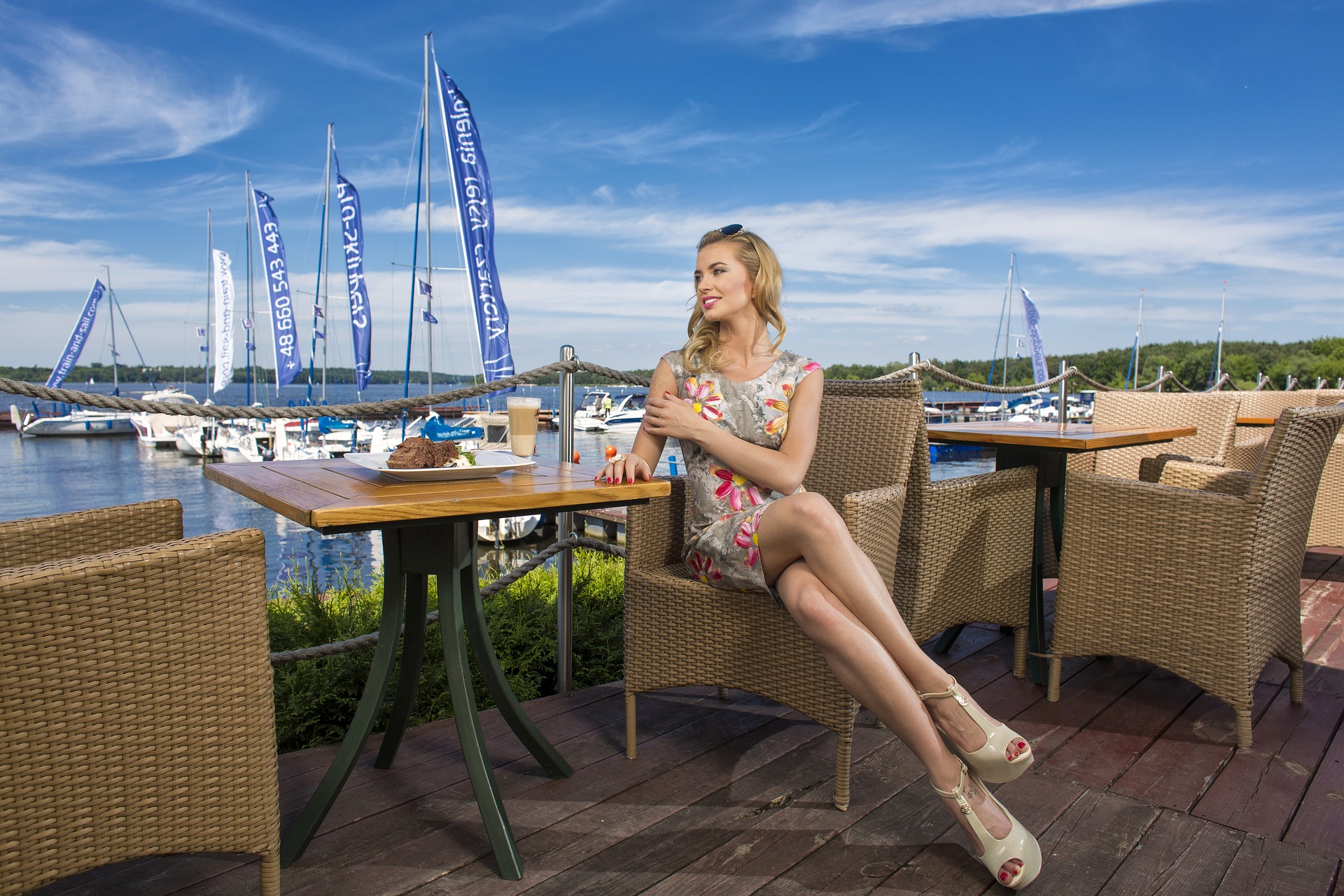
🛂 Register Your Address (zameldowanie): Required for most residency-related procedures.
🆔 PESEL Number: Poland’s national identification number, often needed for banking, healthcare, and official documentation.
📄 Residence Card: For non-EU citizens, this confirms your legal right to live in Poland.
🏛️ Yes, most banks allow foreigners to open accounts with a valid passport and proof of residence.
💳 Online Banking: Widely used and user-friendly, with English interfaces available at major banks.
🪪 PESEL or Tax ID: Often required, depending on the bank and account type.
👩🏫 Language Courses: Local municipalities often offer free or subsidised Polish language lessons.
🤝 Cultural Integration: NGOs and local governments organise workshops, info sessions, and social events for newcomers.
🗺️ Welcome Packs: Some cities provide guides for new residents covering local services, legal matters, and community life.
📦 Reliable Post: National and private courier services are efficient and relatively affordable.
🚚 Moving Companies: International moving services can help relocate belongings directly to Poland.
📮 Pick-Up Points: Parcel lockers (e.g., InPost) are popular and convenient for deliveries.
🌐 Fast Internet: High-speed broadband and fibre optics are common in urban areas.
📱 Mobile Plans: Competitive market with affordable SIM and data packages.
📶 Coverage: Good nationwide, with reliable service even in rural areas.
✈️ Yes, but you must comply with EU regulations, including microchipping and vaccinations.
🐕 Pet-friendly Housing: Some rental contracts allow pets, but always check terms in advance.
🩺 Vet Services: Widely available, with many offering services in English in major cities.
🏙️ Warsaw: Capital city with the largest international community and most English-speaking services.
🎓 Kraków: Known for its expat community, culture, and historic charm.
🌳 Wrocław, Gdańsk, and Poznań: Increasingly popular among newcomers for their liveability and job opportunities.
🗣️ Not Essential, But Helpful: You can get by in major cities with English, but Polish improves daily life and job prospects.
📘 Language Courses: Available through public programmes, universities, and private schools.
👂 Local Attitudes: Poles generally appreciate efforts to speak their language.
🎶 Vibrant Arts Scene: Includes theatre, film festivals, concerts, and traditional folk events.
🎨 Museums and History: Rich cultural heritage, from WWII memorials to medieval castles.
🍻 Nightlife and Dining: Diverse options, from traditional bars to international restaurants and modern cafés.
🤔 Expect Cultural Differences: Things may be more formal or reserved compared to some countries.
📅 Be Patient with Bureaucracy: Processes can be slow but are improving.
👫 Get Involved: Joining clubs, volunteering, or attending meetups helps build a social network quickly.

💰 The official currency is the Polish złoty (PLN).
🪙 Coins: 1, 2, 5, 10, 20, and 50 groszy; 1, 2, and 5 złoty.
💵 Banknotes: 10, 20, 50, 100, and 200 złoty.
🏦 Currency Exchange Offices (Kantor): Often offer better rates than banks.
🏧 ATM Withdrawals: Convenient, but check fees with your home bank.
💳 Multi-currency Cards: Options like Revolut or Wise help manage different currencies.
⚠️ Avoid Dynamic Currency Conversion (DCC): Always pay in złoty, not your home currency.
🧾 Account Maintenance: Monthly charges between 0–20 PLN, often avoidable.
💸 ATM Withdrawals: Free from your bank’s ATMs, others may charge.
🌍 International Transfers: Can be costly with traditional banks; fintech options may be cheaper.
🏡 Rent: One-bedroom in the city centre = 2,000–3,500 PLN/month.
🔌 Utilities: Expect 400–600 PLN/month for electricity, water, heating, etc.
🌐 Internet: Average 50–100 PLN/month for broadband.
👤 Single Person: Around 3,000–4,500 PLN/month, excluding rent.
👨👩👧👦 Family of Four: Roughly 7,000–10,000 PLN/month, excluding rent.
🏙️ Regional Variations: Warsaw and Kraków are more expensive than smaller towns.
🧺 Monthly Groceries: Around 800–1,200 PLN for a single person.
🛒 Shops: Biedronka and Lidl offer value; premium chains cost more.
🍎 Markets: Ideal for fresh and often cheaper produce.
🎫 Monthly Pass: 100–150 PLN depending on the city.
🚌 Single Ticket: Costs between 3–5 PLN, varies by duration and zone.
🎓 Discounts: Students and pensioners often get reduced fares.
📊 Gross Salary: Roughly 8,821 PLN/month.
🧾 Net Salary: Around 6,344 PLN/month after tax.
💼 High-Earning Sectors: IT, finance, and management lead the charts.
💸 Income Tax: 12% under 120,000 PLN; 32% above.
🏥 Contributions: Health, pension, and social insurance are deducted.
🖥️ Tax Filing: Online filing is common and must be done by April.
📈 Interest Income: Taxed at 19% (“Belka tax”).
🧾 Double Taxation Relief: Possible with proof of foreign tax residency.
📂 Documentation: Submit a certificate of tax residency to your bank.
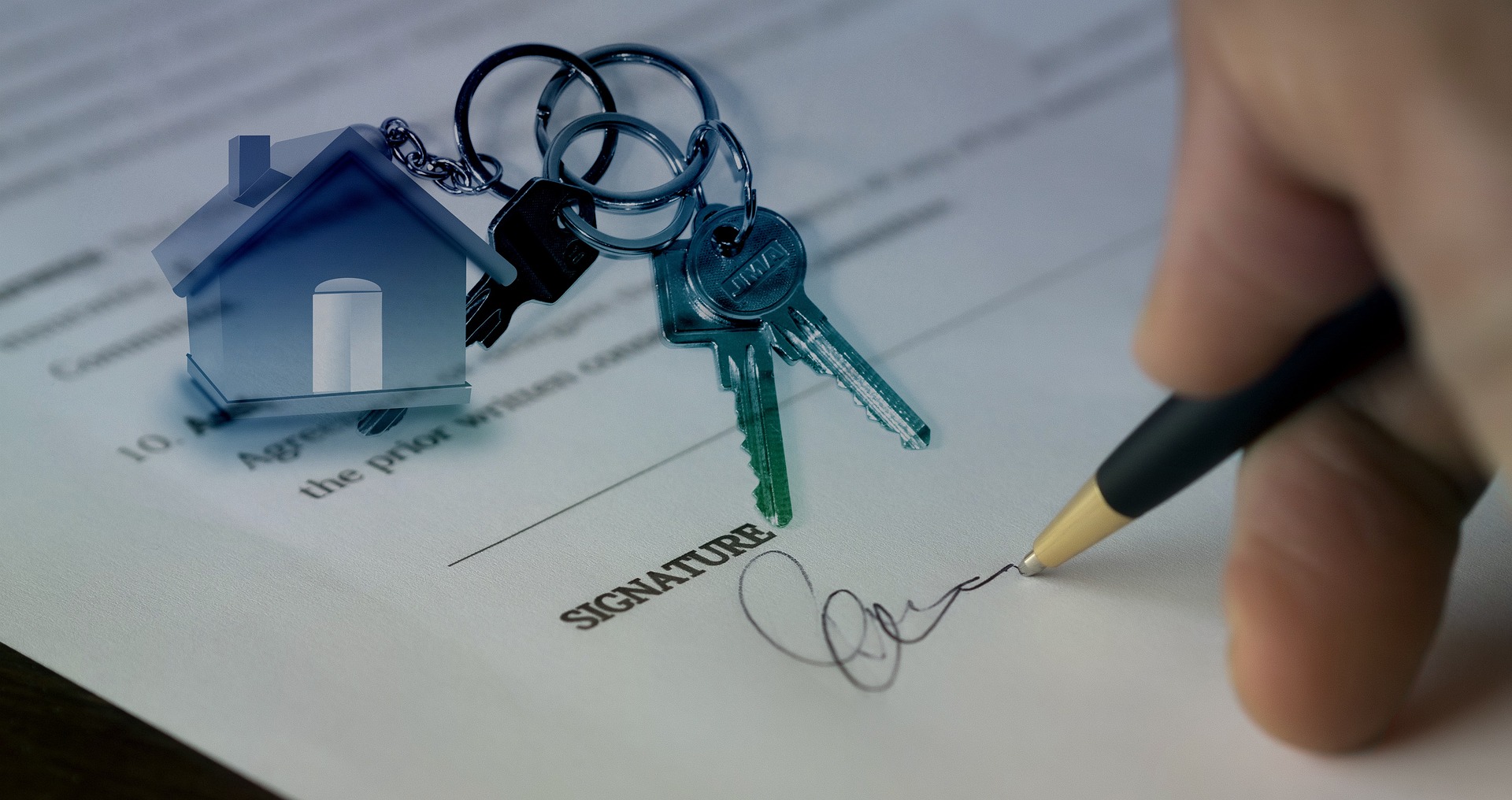
🌍 Yes, foreigners can buy property in Poland, but there are some conditions.
📄 EU/EEA citizens: Can purchase property without restrictions.
🏠 Non-EU citizens: May need a permit from the Ministry of Internal Affairs, especially for standalone houses or land.
📝 Flats (apartments): Usually don’t require a permit, even for non-EU nationals.
🔍 Find a Property: Use agencies, websites, or local listings.
✍️ Preliminary Agreement (Umowa przedwstępna): Optional, but often used to secure the deal.
🧑⚖️ Notarial Deed: Must be signed in front of a Polish notary.
🗃️ Land and Mortgage Register Entry: Confirms you as the legal owner.
💸 Fees: Include agent commission, notary fees, tax, and court registration costs.
🧮 Notary Fees: Typically 2–3% of the property’s value.
💰 Property Transfer Tax: 2% on the sale of second-hand property.
💼 Legal Fees & Court Fees: Approximately 1,000–2,000 PLN.
📉 Agent Commission: Usually 2–3% of the price (plus VAT).
🏢 Flats (Apartments): Most common in cities.
🏠 Detached & Semi-detached Houses: More common in suburban or rural areas.
🏞️ Plots of Land: Available but may have building restrictions depending on zoning.
🧾 Renting: More flexible and suitable for short or medium-term stays.
🏠 Buying: May be a good investment if planning to stay long-term.
💷 Monthly Rent vs Mortgage: Renting can cost the same or more than monthly loan repayments, depending on the area.
📅 Lease Duration: Standard leases range from 6 to 12 months.
💵 Deposit: Typically one or two months’ rent.
🔧 Responsibilities: Check who covers repairs, utilities, and maintenance.
🏠 Furnished or Unfurnished: Be clear on what’s included.
🛏️ Yes, most rental properties in Poland come furnished.
📦 Level of Furnishing: Can range from basic furniture to fully equipped with kitchenware and appliances.
🧾 Inventory Lists: Often included in rental contracts to avoid disputes.
💡 Utilities: Electricity, gas, water, and heating usually cost 400–700 PLN/month.
🌐 Internet: Roughly 50–100 PLN/month.
🧹 Building Maintenance Fees (czynsz): Paid monthly, especially for flats, covering shared areas and rubbish collection. Costs depend on the size of the flat, and how many people live there. An average in Warsaw for 2 people in a 2 bed flat is around 1,000 PLN per month.
🏦 Yes, but conditions vary depending on your residency status and income source.
📊 Loan-to-Value (LTV): Banks may offer 70–80% of the property’s value.
📝 Documents Required: Income proof, residence permit, credit history, and deposit funds.
🇵🇱 Polish Bank Account: Usually required to apply for a mortgage.
🌐 Property Portals: Websites like Otodom, Morizon, and Gratka are widely used.
🧑💼 Estate Agents: Helpful, especially for non-Polish speakers.
🗣️ Language Barrier: Property listings and legal procedures are often in Polish, so consider a translator or bilingual agent.

🕒 Temporary Residence Permit: Issued for stays longer than 90 days, valid for up to 3 years.
📜 Permanent Residence Permit: Typically available after 5 years (EU citizens) or 10 years (non-EU citizens).
🇪🇺 Long-Term EU Resident Permit: For non-EU nationals after 5 years of legal stay, stable income, and health insurance.
🏢 Application Submission: Must be done at your local Voivodeship Office (Urząd Wojewódzki).
📄 Required Documents: Application form, passport, accommodation proof, insurance, and purpose of stay.
⚠️ Important: While the official processing time for obtaining Temporary Residency in Poland is 60 days, in reality, it can take several months or even up to 2 years, depending on the region where you apply.
During this waiting period:
❌ You are not permitted to work
❌ You cannot leave Poland, or your application may be cancelled
Plan accordingly and be prepared for potential delays.
🇪🇺 EU/EEA Citizens: Do not need a work permit to work or live in Poland.
🌍 Non-EU Citizens: Generally require a work permit, arranged by their employer.
🔠 Permit Types: Type A (for Polish employers), Type B (for long-term board members), and others.
✅ Yes, retirement in Poland is possible for foreigners.
📋 Residence for Retirees: Apply for a temporary residence permit based on retirement income and insurance.
🏥 Healthcare Access: Must have valid health coverage, public or private.
🕰️ Length of Stay: 5 years for EU citizens; 10 years for non-EU.
💶 Financial Stability: Proof of steady income and accommodation.
🗣️ Language Skills: Basic knowledge of Polish is required for non-EU applicants.
🇪🇺 EU/EEA Citizens: Can stay up to 90 days without registering; longer stays require registration.
🛃 Non-EU Citizens: 90 days within a 180-day period under a Schengen visa; longer stays require a permit.
🏛️ EU/EEA Citizens: Can open and run a business just like Polish citizens.
📈 Non-EU Citizens: May start businesses, but with restrictions on legal forms and needing a residence permit for business.
🗂️ Registration: Required with CEIDG (sole trader) or KRS (companies).
🖊️ Application Form: Completed and signed.
🛂 Passport: Valid, plus copies of all pages.
🖼️ Photographs: Recent, passport-sized.
🎓 Proof of Purpose: e.g., work contract, university letter, pension documents.
🏠 Proof of Accommodation: Lease or ownership documents.
🏥 Health Insurance: Must cover you in Poland.
📅 Standard Processing Time: Usually around 3 months.
🧾 Possible Delays: Common due to incomplete applications or high demand.
🚦 Legal Stay: You may remain in Poland while your permit application is under review.
✅ Yes, valid health insurance is required to obtain or extend any residence permit.
🏥 Types of Cover: Private insurance or enrolment in Poland’s National Health Fund (NFZ).
📑 Proof Required: Must be submitted with your application.
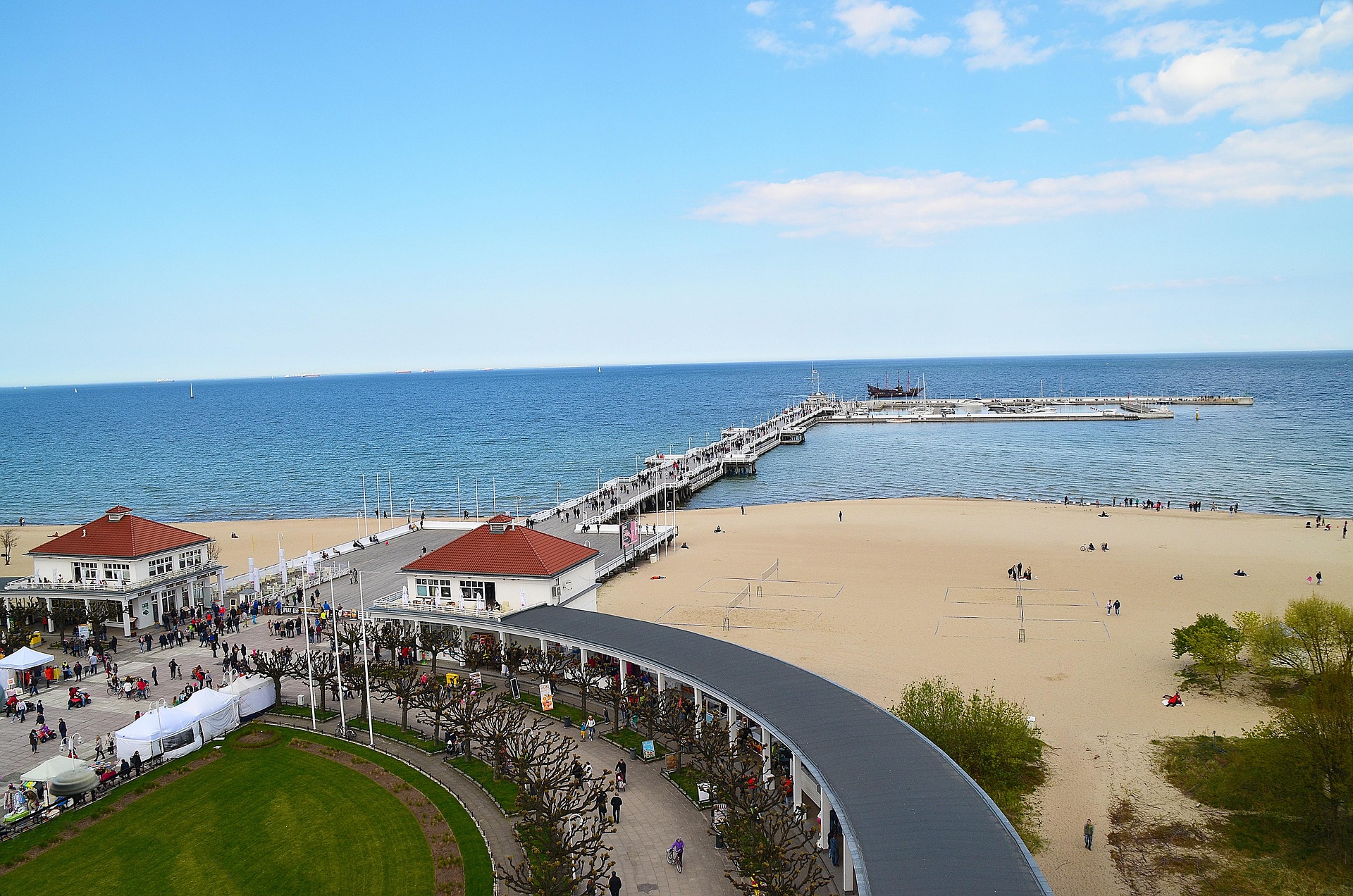
✅ Yes, foreigners can retire in Poland.
🌍 EU/EEA Citizens: Can reside in Poland without a visa but must register their stay if exceeding 90 days.
🌐 Non-EU Citizens: Need to apply for a temporary residence permit based on retirement.
💰 Proof of Sufficient Funds: Demonstrate stable income or pension to support yourself.
🏠 Accommodation: Provide evidence of a place to live in Poland.
🏥 Health Insurance: Show valid health coverage, either private or through the National Health Fund (NFZ).
📑 Application: Submit the necessary documents to the local Voivodeship Office.
🏘️ Housing: Rent for a one-bedroom apartment ranges from 1,500 to 3,000 PLN per month, depending on location.
🛒 Groceries: Monthly expenses are approximately 800 to 1,200 PLN.
🚍 Transportation: Public transport passes cost around 100 to 150 PLN monthly.
🎭 Entertainment: Dining out and leisure activities are generally affordable.
🏥 Public Healthcare: Available through the NFZ; requires registration and contributions.
💳 Private Insurance: Many retirees opt for private health insurance for faster access to services.
🩺 Medical Services: Poland offers a high standard of medical care, with many English-speaking professionals in urban areas.
🧳 Kraków: Known for its rich history and vibrant culture.
🌆 Wrocław: Offers a mix of modern amenities and historical charm.
🌉 Gdańsk: Coastal city with a relaxed atmosphere.
🏞️ Smaller Towns: Places like Zakopane and Białystok offer tranquility and lower living costs.
🏡 EU/EEA Citizens: Can purchase property without restrictions.
🏘️ Non-EU Citizens: May need a permit from the Ministry of Internal Affairs, especially for land or standalone houses.
📝 Flats: Generally easier to purchase without additional permits.
📜 Tax Treaties: Poland has agreements with many countries to avoid double taxation.
💼 Declaration: Retirees must declare their foreign income to the Polish tax authorities.
🧮 Tax Rates: Depend on the amount and source of income; consulting a tax advisor is recommended.
🗣️ Not Mandatory: But learning basic Polish can enhance daily life and integration.
📚 Language Courses: Available in most cities, often tailored for foreigners.
🧑🤝🧑 Community: Many expatriate communities offer support and language exchange opportunities.
🛂 Schengen Area: Poland is part of the Schengen Zone, allowing for visa-free travel to other member countries.
🛃 Duration: Short stays (up to 90 days) in other Schengen countries are permitted.
📄 Documentation: Carry your residence permit and passport when traveling.
⏳ Processing Time: Typically up to 3 months, but can vary by region.
📅 Application Period: It’s advisable to apply well before your current visa or permit expires.
📬 Notification: Applicants are informed by mail regarding the decision.
